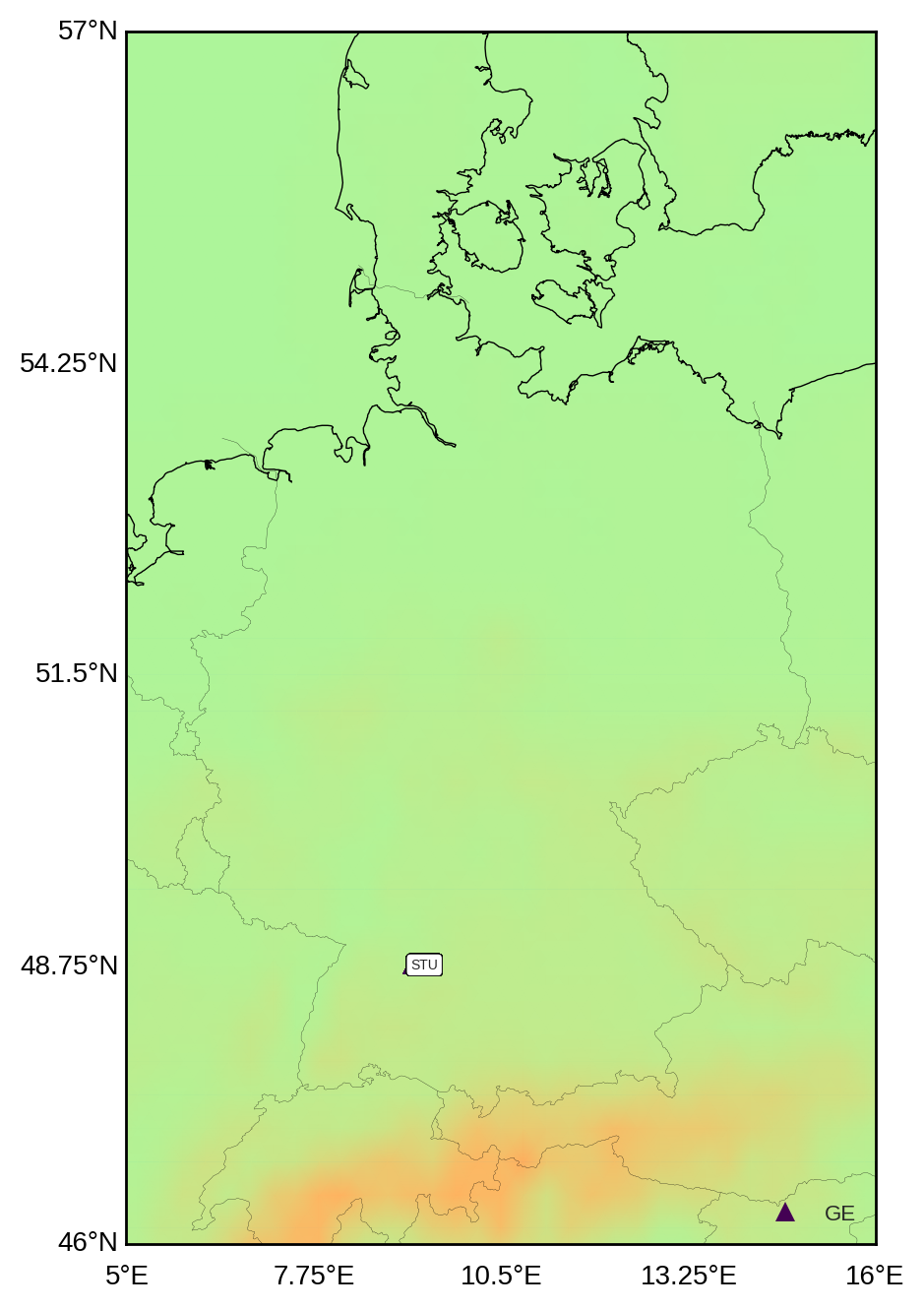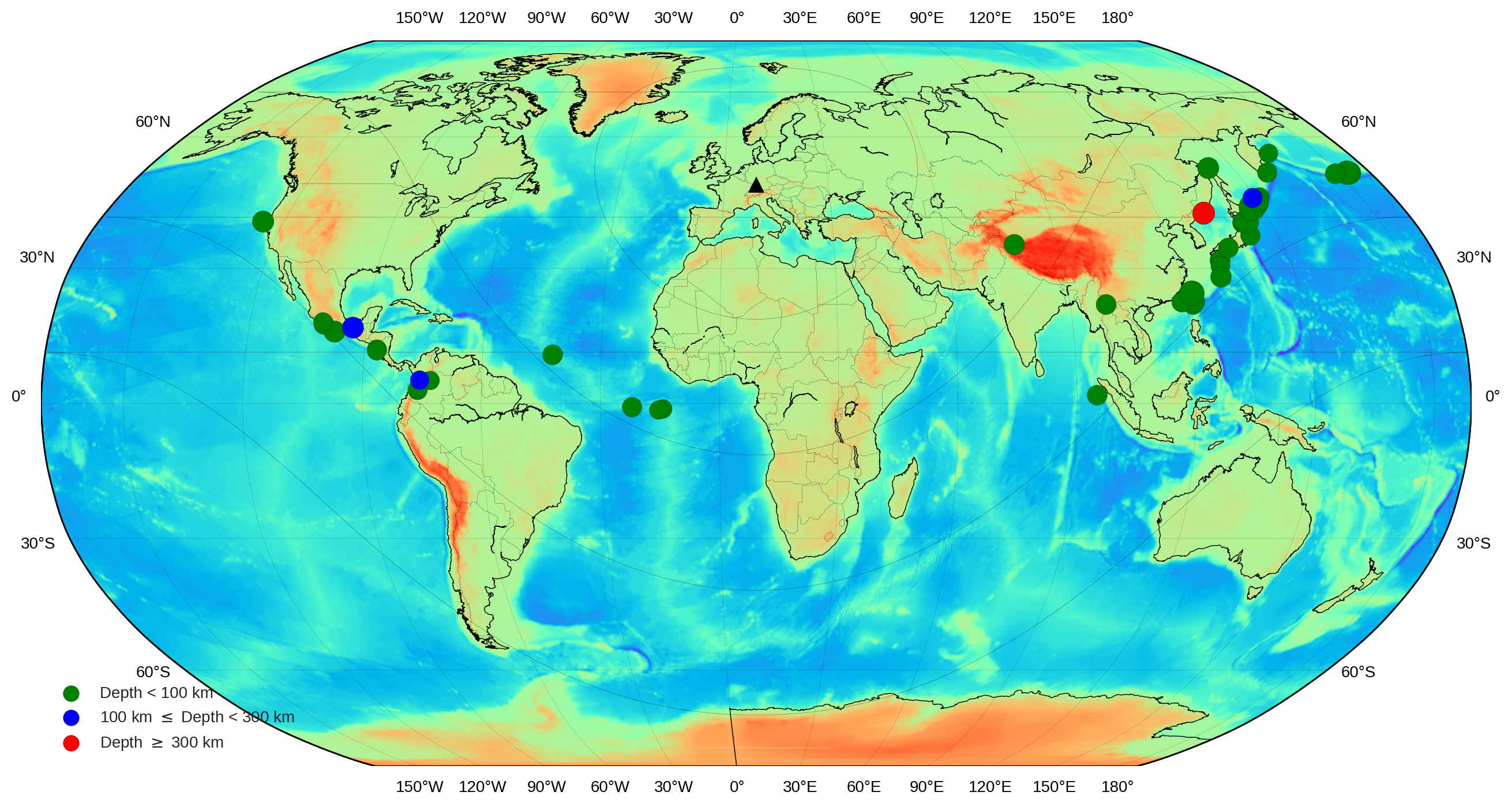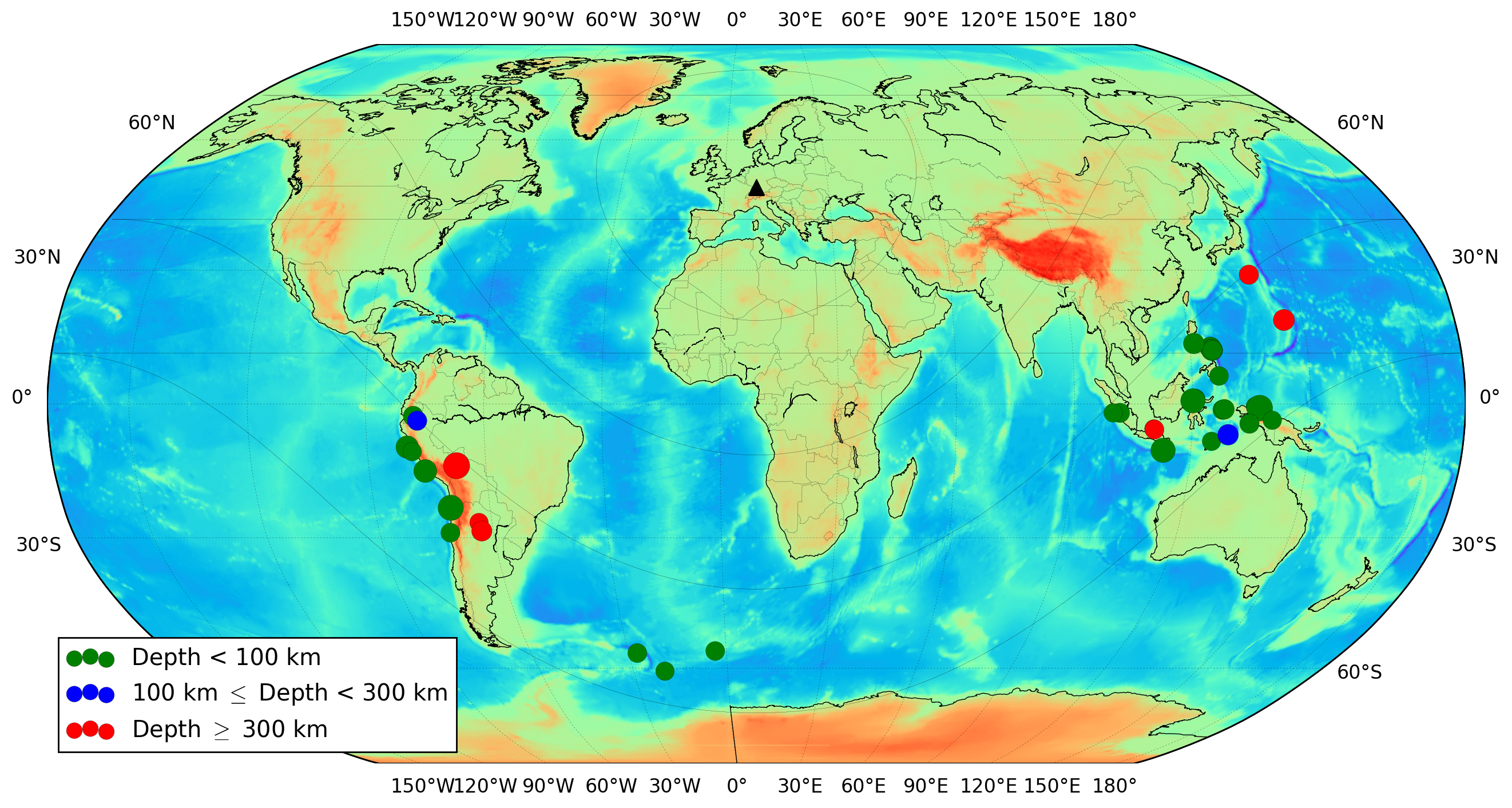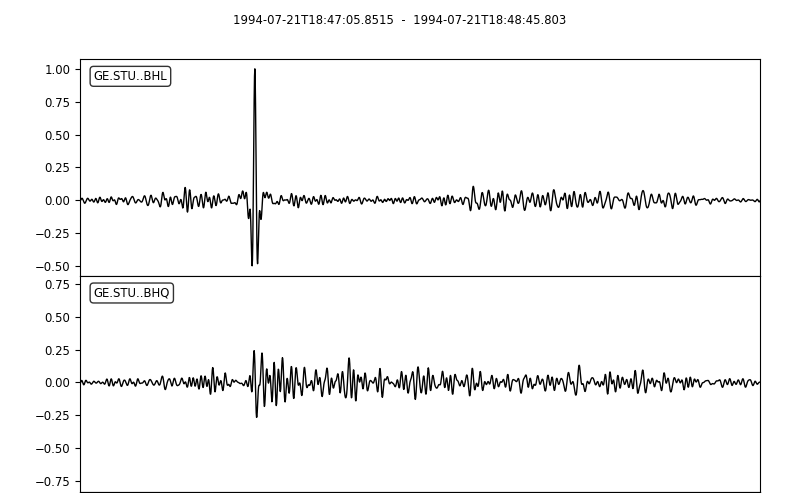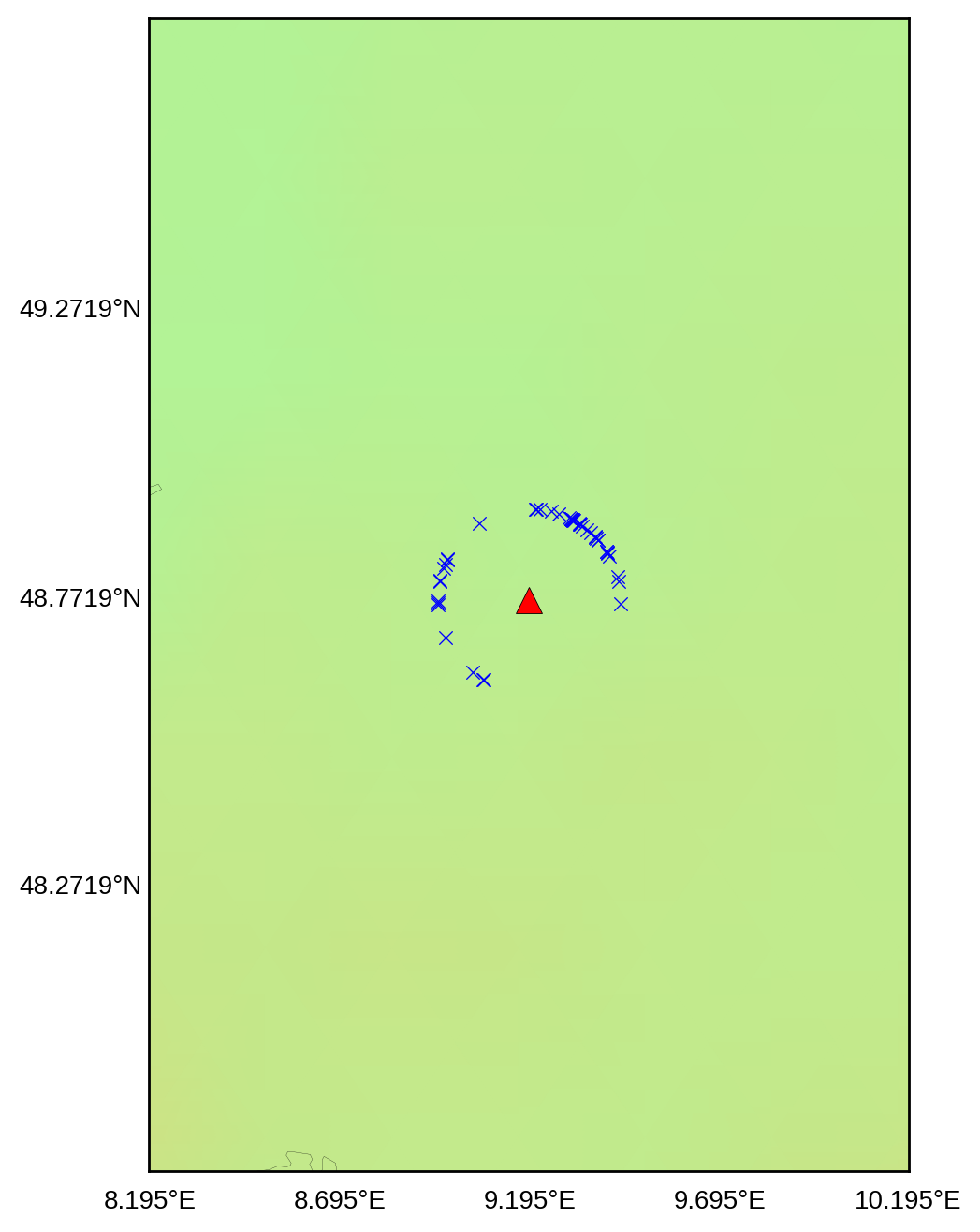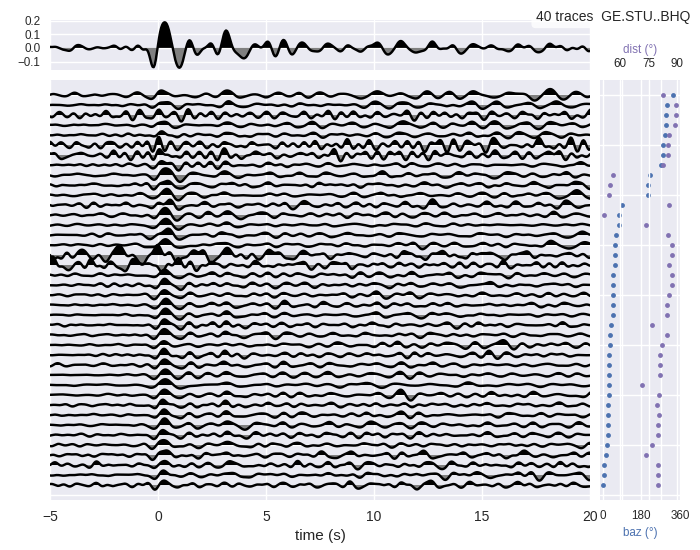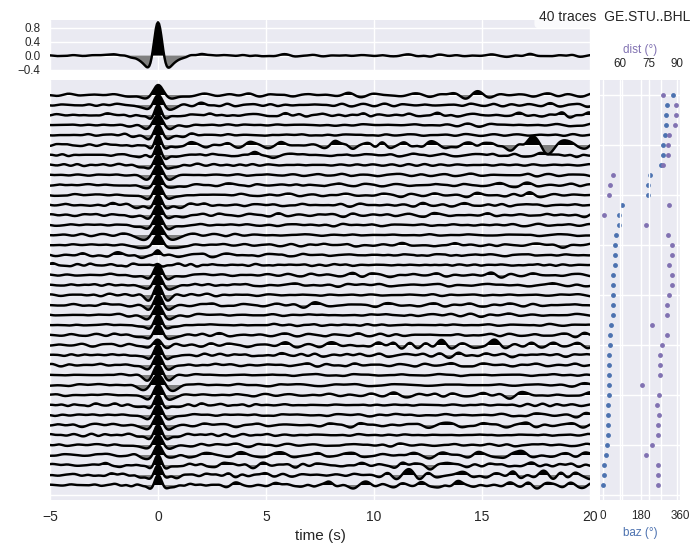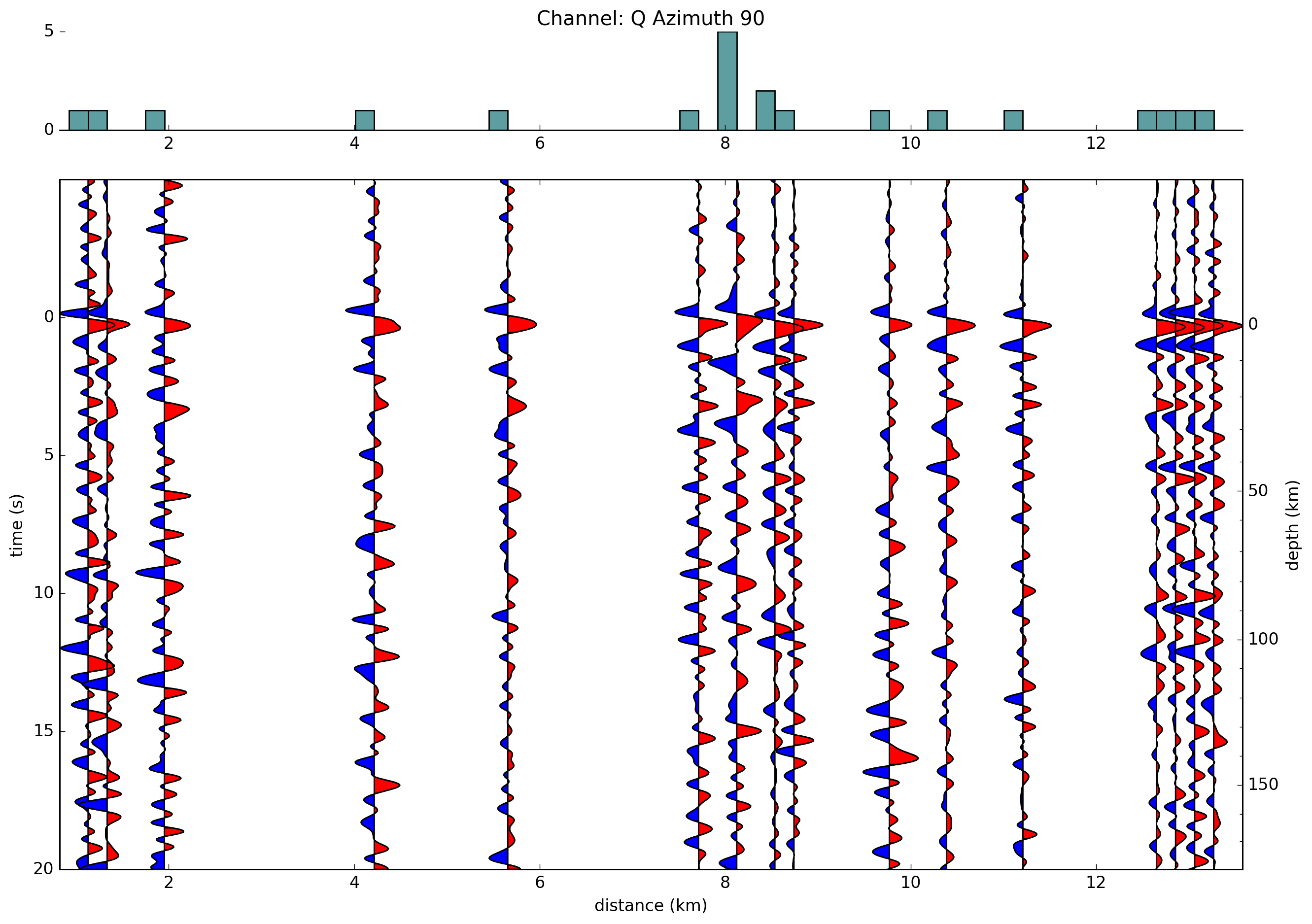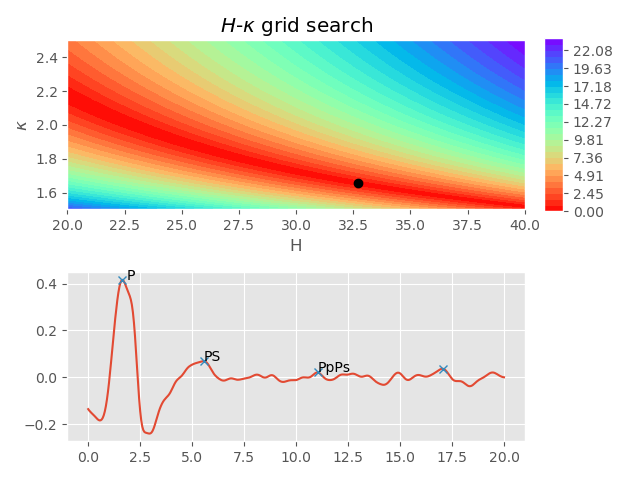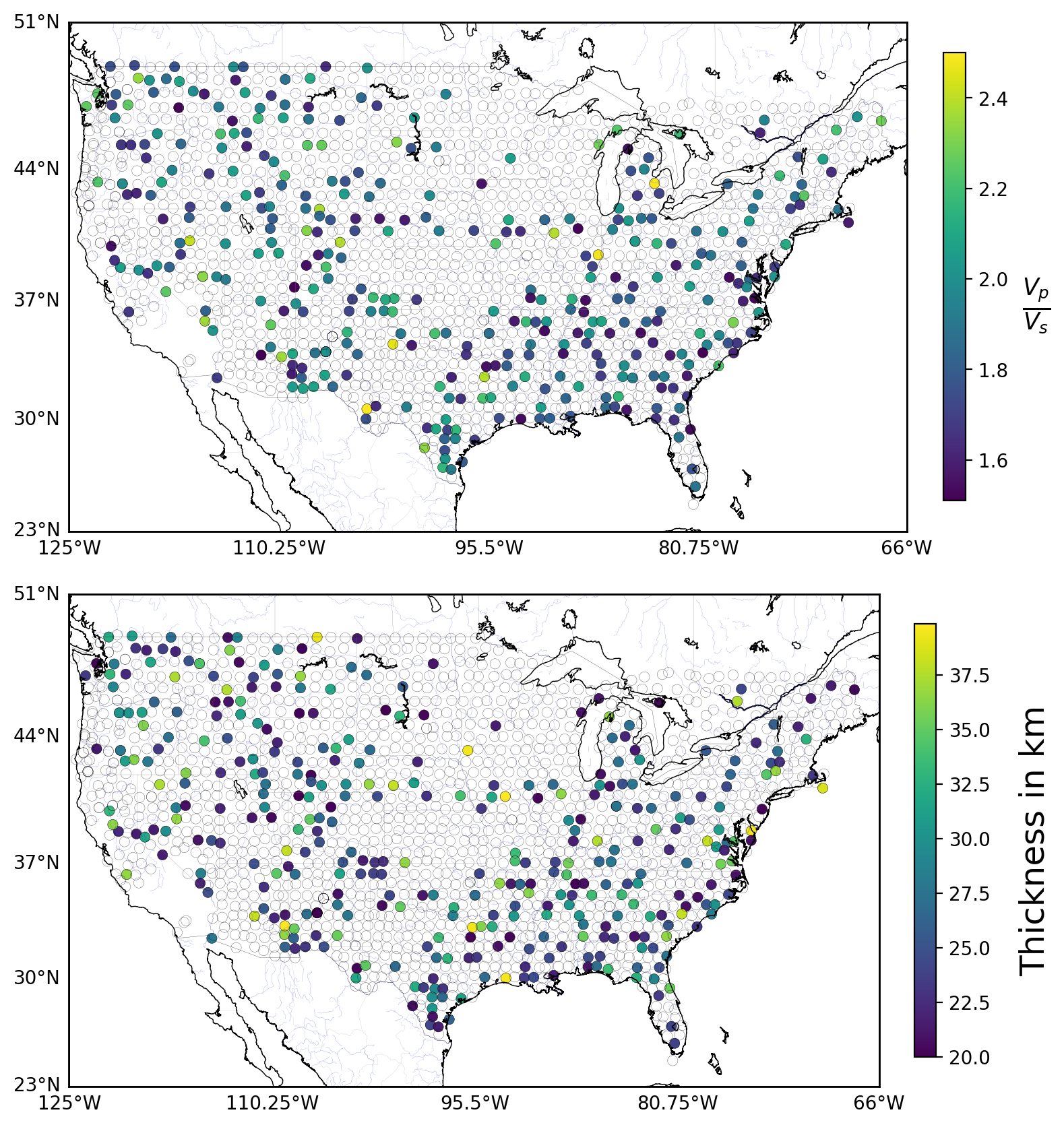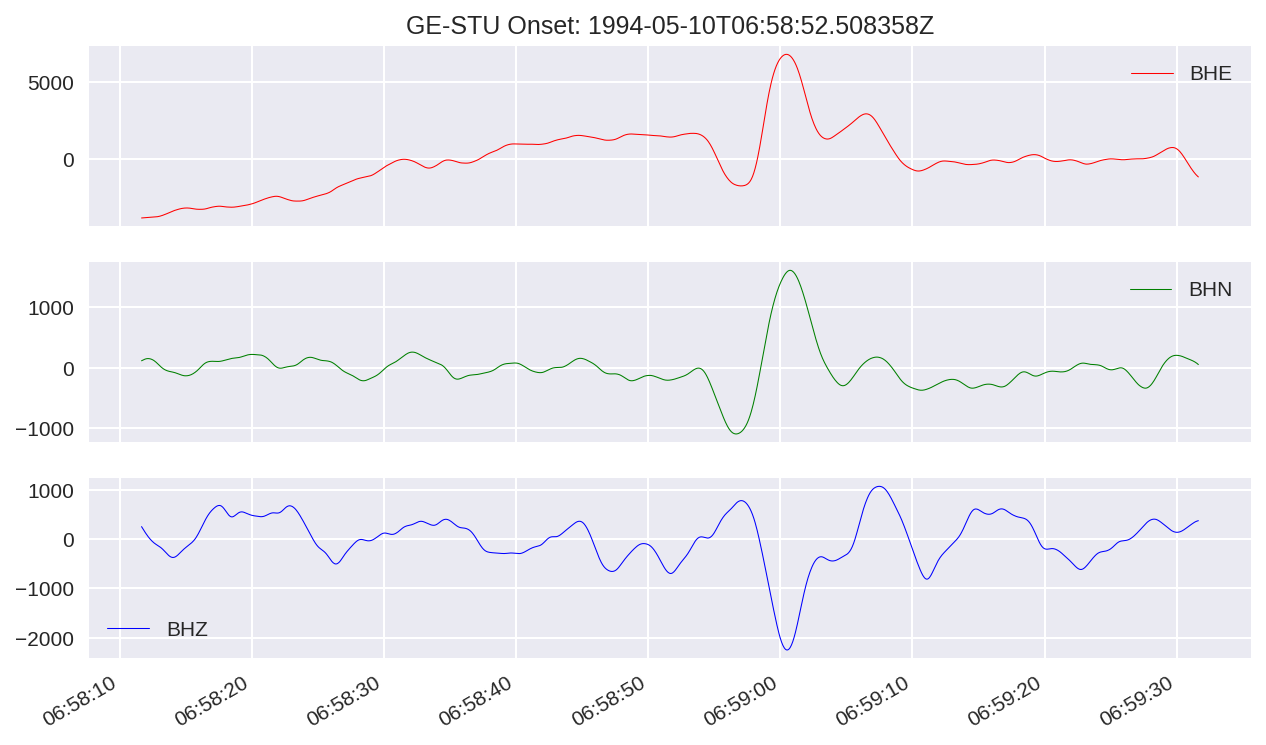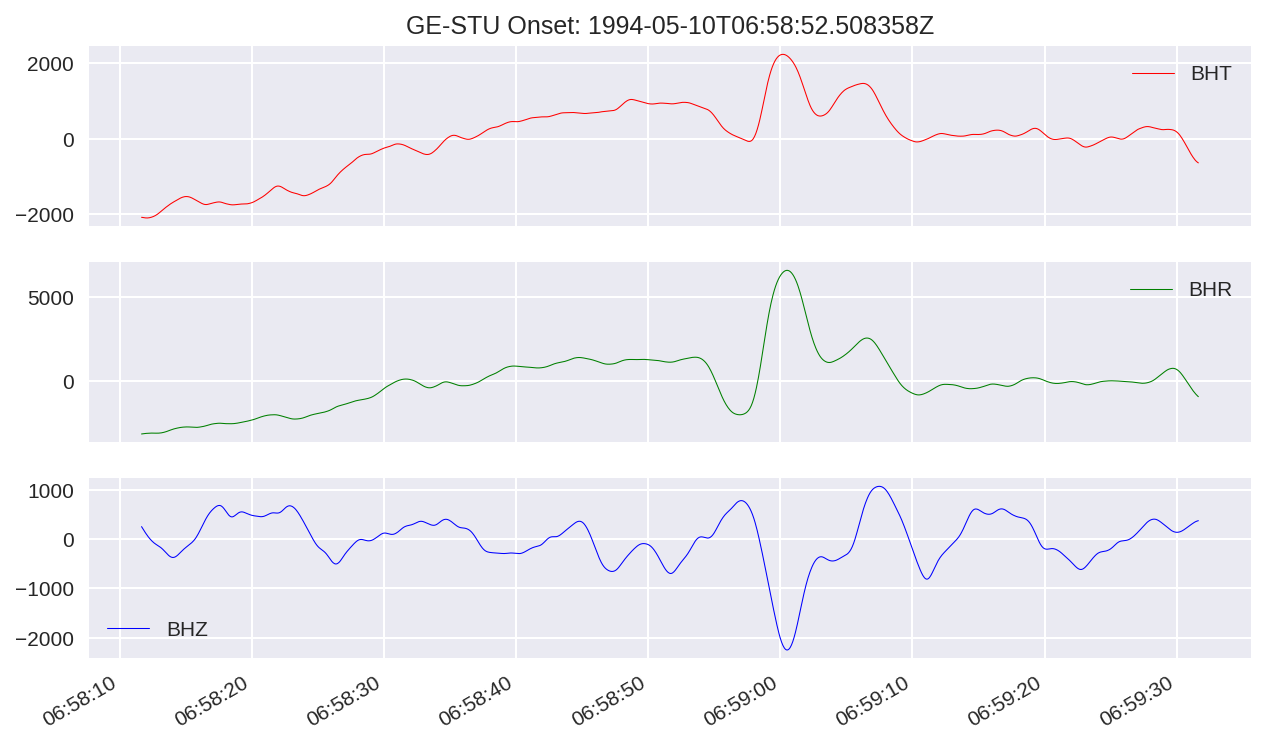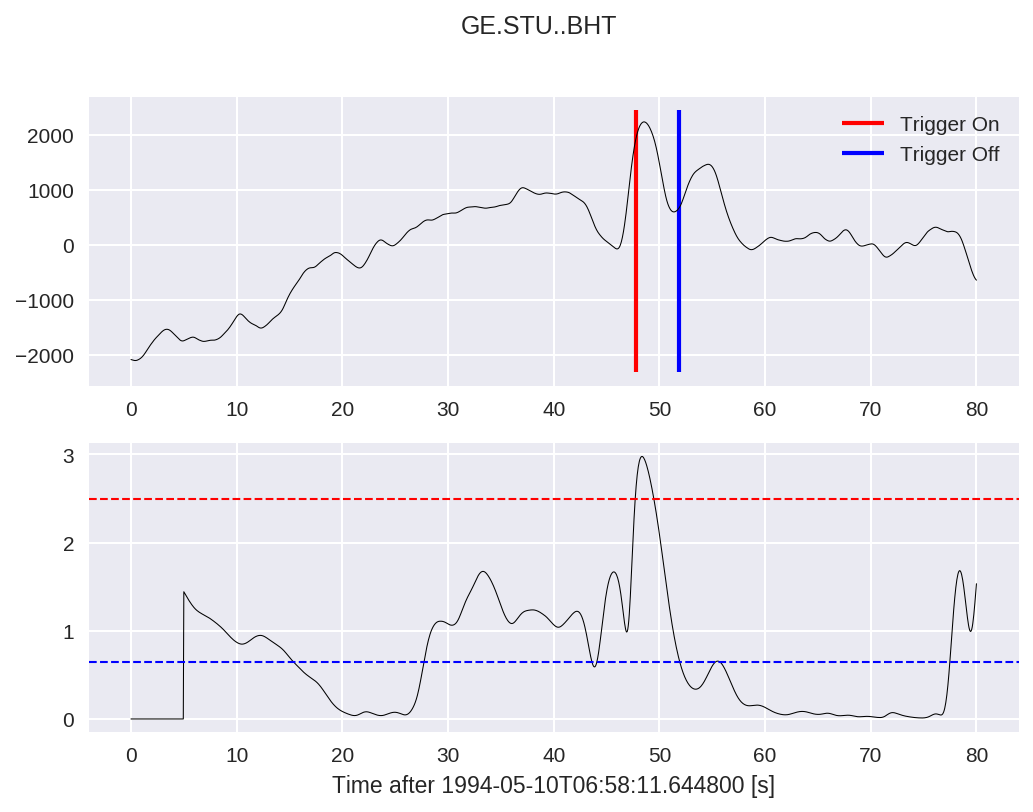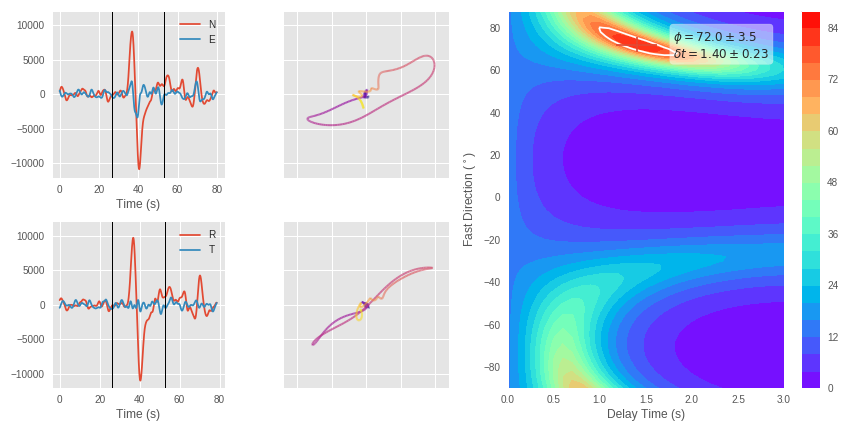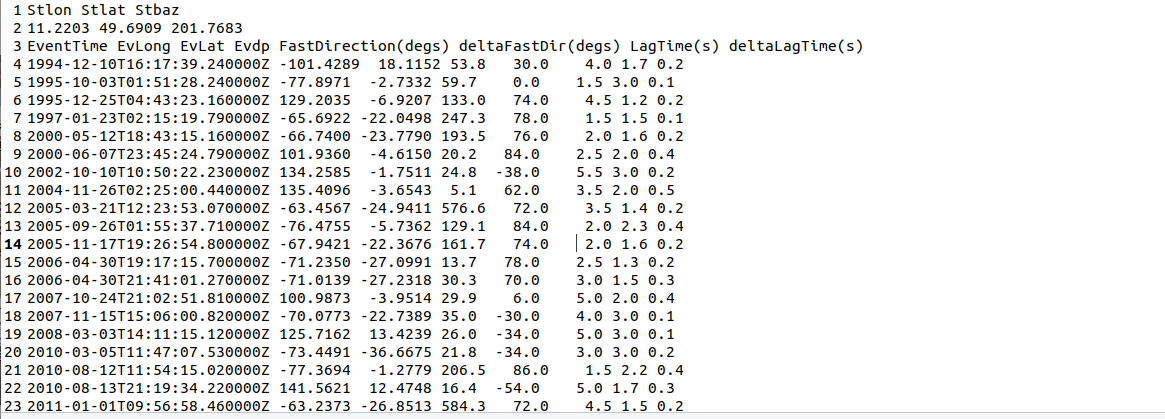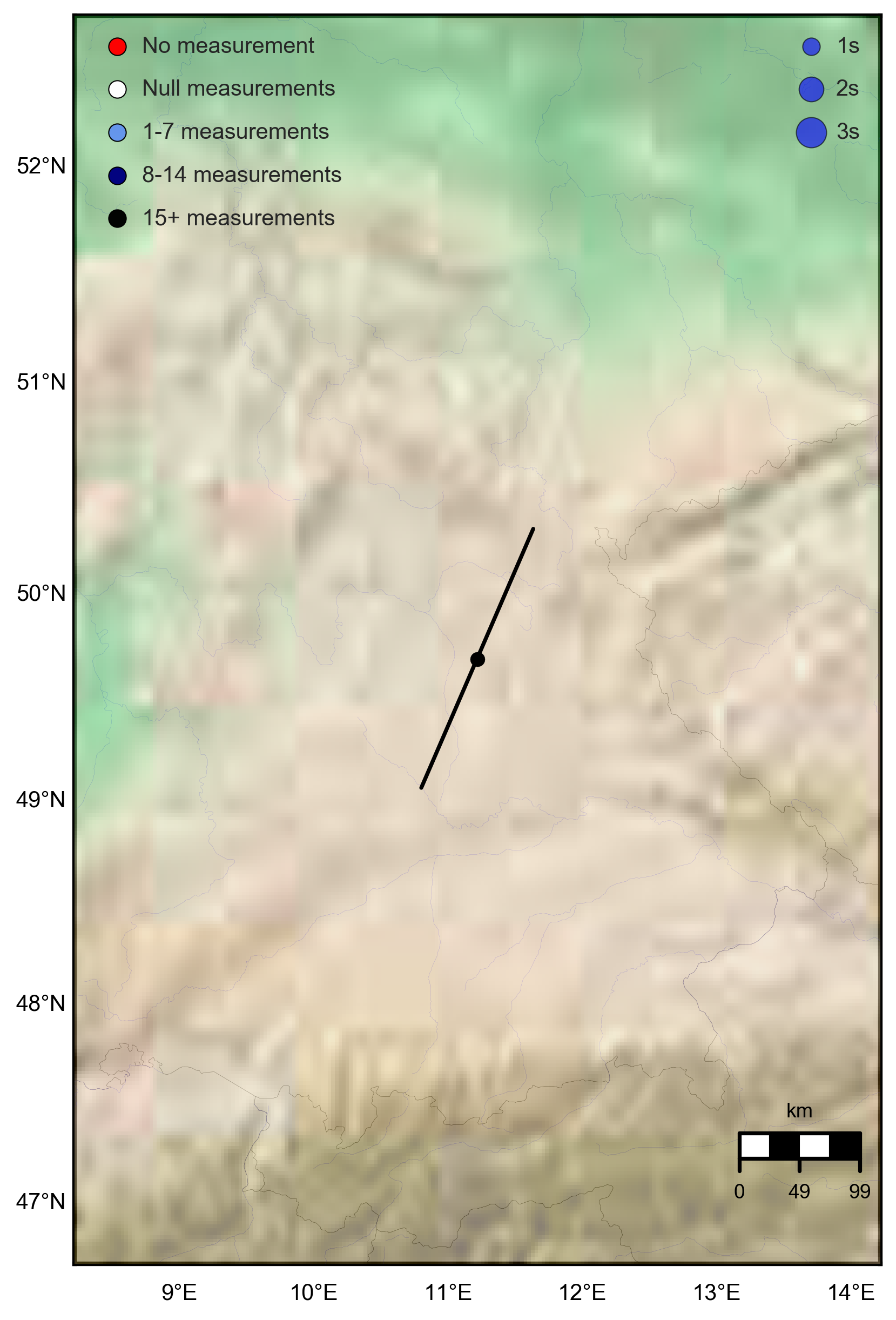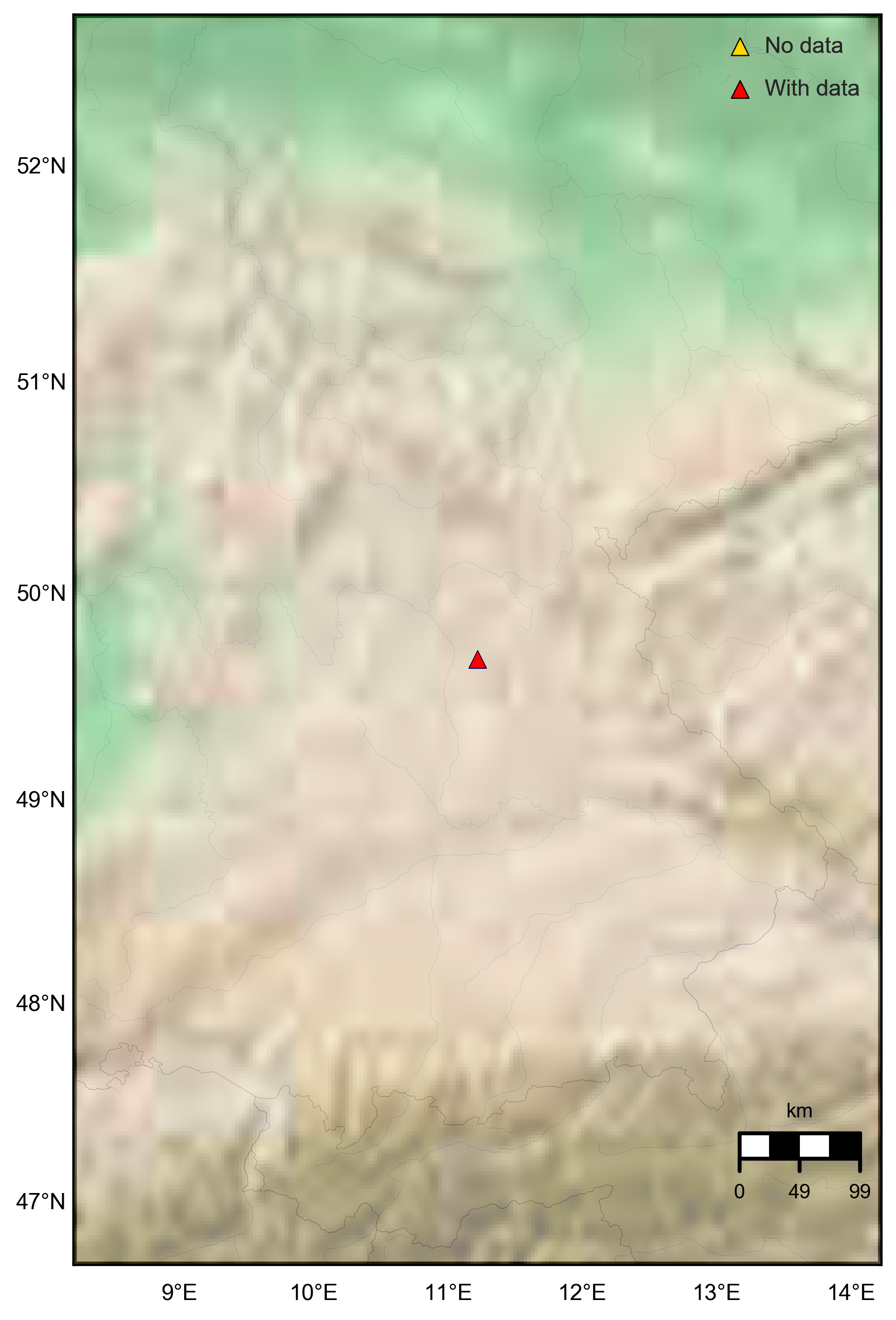Receiver Function and SKS automatic measurement - Seismological Tools Automated Download, processing & Imaging Using Mostly Python (STADIUM - Py)
- By Cédric P Legendre (@cplegendre) and Utpal Kumar (@utpalrai)
- Based on RF analyses by: Tom Eulenfeld (@trichter); https://github.com/trichter/rf
- Based on SKS analyses by: Jack Walpole (@JackWalpole); https://github.com/JackWalpole/splitwavepy
- Based on ObsPy: https://github.com/obspy/
The User's manual for STADIUM-Py can be downloaded from here.
Install the anaconda Python 3 environment rfsksenv by running the following command (Note: It requires preinstalled anaconda)
- OSX:
conda env create -f environment_osx_10_14_6.yml
- Linux:
conda env create -f environment_UbuntuXIX.yml
- Windows:
requires installation of Anaconda Python followed by packages in the environement.
To activate the anaconda environement:
conda activate rfsksenv
-
All these libraries can be installed separately in "non-anaconda" environment as well.
-
If having some issues with Cartopy, one simple fix may be:
pip uninstall shapely; pip install --no-binary :all: shapely
-
In Ubuntu, there were conflicts in the different required libraries. Therefore, some of the necessary dependencies needed to be installed manually:
- cartopy
--
conda install -c conda-forge cartopy - h5py
--
conda install h5py - obspyh5
--
pip install obspyh5or --conda install obspyh5 - rf
--
pip install rf - splitwavepy
--
pip install splitwavepy
- cartopy
--
python stadium.py
A total of four files controls the run of STADIUM-Py:
input_file.yaml(select region)Settings/stepwise.yaml(toggle the steps)Settings/advRFparam.yaml(fine tune the RF parameters)Settings/advSKSparam.yaml(fine tune the SKS parameters)
Below, you will find a list of the parameters, with possible values and its description.
project\_name|default| Define the name of the project directory where all results will be stored.fresh_start| 0/1 | Delete the 'default' folder and start freshmakeRF| 0/1 | Run the code to calculate the Reciever FunctionsmakeSKS|0/1 | Run the code to calculate the shear-wave splitting of SKS phase
In addition, 4 boundary parameters are used to select the region of interest:
mnlong|-130 | Minimum longitude of the region of interestmxlong|-60 | Maximum longitude of the region of interestmnlat|35 | Minimum latitude of the region of interestmxlat|50 | Maximum latitude of the region of interest
This file is provided in case user want to run specific part of the code (for testing or parameters adjustments).
data settings
client|IRIS | Enter all the clients for data download separated by commas. List of ObsPy clients: https://docs.obspy.org/packages/obspy.clients.fdsn.html . Current list -- 24 items: BGR, EMSC, ETH, GEONET, GFZ, ICGC, INGV, IPGP, IRIS, ISC, KNMI, KOERI, LMU, NCEDC, NIEP, NOA, ODC, ORFEUS, RASPISHAKE, RESIF, SCEDC, TEXNET, USGS, USP.network|* | List of networks (default = all)station|* | List of stations (default = all)locations|"","00"| List of locations (default = "","00")
plot settings
plot_stations|0/1 | Create a stations mapplot_events|0/1 | Create an events mapplot_all_retrieved_events_stations|0/1 | Create a stations and event map
RF stepwise
obtain_inventory_RF| 0/1 | List all the stations availabledownload_data_RF| 0/1 | Download the waveforms to calculate the Reciever Functionscompute_plot_RF| 0/1 | Plot receiver functions?plot_ppoints|0/1 | Plot the piercing points (for Reciever Functions)plot_RF_profile|0/1 | Plot the vertical profiles (for Reciever Functions)
SKS stepwise
obtain_inventory_SKS|0/1 | List all the stations available (for SKS)download_data_SKS|0/1 | Download the waveforms to calculate the shear-wave splitting of SKS phaseplot_traces_ENZ|0/1 | Plot the waveforms (for SKS)plot_traces_RTZ|0/1 | Plot the rotated waveforms (for SKS)plot_SKS_measure|0/1 | Plot the grid search for phase and delay time.plot_SKS|0/1 | Plot the results (for SKS)picking_SKS|0/1 | Picking of the SKS phaseplot_traces|0/1 | Plot the traces that may contain SKS phaseplot_trigger|0/1 | Plot the automatic picking of the SKS phase
filenames
invRFfile|rf_stations.xml | station xmlRFsta|all_stations_RF.txt | station text catalogretr_stations|all_stations_rf_retrieved.txt | retrived stations list filedata_rf_suffix|rf_profile_data | rf data file name: {net}-{stn}-rf_profile_data.h5events_map_suffix|RF-events_map | events map filename suffix {net}-{stn}-RF-events_map.pngretr_station_prefix|RF_stations | retrieved stations prefixrf_compute_data_suffix|rf_profile_rfs | rf computation result file name: network-station-rf_profile_rfs.h5rfprofile_compute_result_prefix|rf_profile_profile | rf profile computation result file name: rf_profile_profile{azimuth}_*.h5
H - K settings
h_kappa_res_file|h-kappa-values.txt | File name for the H-K resultsplot_h|0/1 | Plot Moho mapplot_kappa|0/1 | Plot Vp/Vs ratio
RF profile settings
num_profile_divs_lat|2 | Amount of EW profilesnum_profile_divs_lon|3 | Amount of NS profilesppdepth|70 | Chosen depth for piercing point calculation
RF event search settings
minradiusRF|30 | Minimum epicentral distance (for Reciever Functions)maxradiusRF|90 | Maximum epicentral distance (for Reciever Functions)minmagnitudeRF|5.5 | Minimum magnitudes of events (for Reciever Functions)maxmagnitudeRF|9.5 | Maximum magnitudes of events (for Reciever Functions)
RF filter settings
minfreq|0.5 | stream minfreq for bandpassmaxfreq|2.0 | stream maxfreq for bandpass
RF display settings
trace_height|0.1 | height of one trace in inchestrim_min|-5 | trim stream relative to onset before plottingtrim_max|20 | trim stream relative to onset before plottingrf_info|default| additional axes for RF plot, None for no additional axes
File names
invSKSfile|sks_stations.xml | station xmlSKSsta|stations_SKS.txt | station text catalogretr_stations|all_stations_sks_retrieved.txt | retrived stations list filedata_sks_suffix|sks_profile_data | sks data file name: {net}-{stn}-sks_profile_data.h5events_map_suffix|SKS-events_map | events map filename suffix {net}-{stn}-SKS-events_map.pngretr_station_prefix|SKS_stations | retrieved stations prefixsks_meas_indiv|sks_measurements.txt | sks measurements file suffix for individual stationssks_measure_map|SKS_station_Map | filename of sks measurements map
SKS event search settings
minradiusSKS|90 | Minimum epicentral distance (for SKS)maxradiusSKS|120 | Minimum epicentral distance (for SKS)minmagnitudeSKS|5.5 | Minimum magnitudes of events (for SKS)maxmagnitudeSKS|9.5 | Maximum magnitudes of events (for SKS)
SKS filter settings
minfreq|0.01 | stream minfreq for bandpassmaxfreq|0.6 | stream maxfreq for bandpass
SKS picking
trimstart|30 | trim the traces for sks picking trace starttime+trimstart to starttime+trimendtrimend|110 | trim the traces for sks picking trace starttime+trimstart to starttime+trimend
SKS picking algorithm
sks_picking_algo|recursive_sta_lta | picking algorithm for sks phase...other options are classic_sta_lta, z_detect, carl_sta_trig, delayed_sta_ltasks_picking_algo_thr0|2.5 | starting threshold for sks picking algorithmsks_picking_algo_thr1|0.65 | end threshold for sks picking algorithm
SKS measurements constraints
sel_param: lam12 #options: snr, lam12; selection parameter of the measurements: either use signal to noise ratio, snr or use the eigenvalue ratio (lambda1/lambda2), lam12
snr_ratio|2 | minimum signal to noise ratio of the traces for filtering good measurementslam12fast_threh|1.1 | threshold for the lambda1/lambda2 for fast direction picklam12lag_threh|1.1 | threshold for the lambda1/lambda2 for lag time pick
minlag|0 | minimum allowed lag time in sks measurementsmaxlag|3 | maximum allowed lag time in sks measurementsmaxdlag|1.5 | maximum allowed error in the lag time
maxdfast|7 | maximum allowed error in the fast direction
error_plot_toggles:
error_plot_indiv|0 | make 1 to plot the error profiles of fast direction and lag time for each measurementserror_plot_all|1 | make 1 to plot the error profiles of fast direction and lag time for each measurements
PS: These parameters should be modified with caution by the users.
-
Search the events that satisfy some critera (defined input_file.yaml).
-
Search all stations for which data are available (defined input_file.yaml).
-
Download the waveforms.
-
This is an automated procedure that may be time consuming if a large dataset is selected.
- Filter and rotate the trace into the LQ domain.
- Deconvolve the radial and tangential components by the vertical component.
- Calculate the piercing points for each event.
- Stacks the reciever functions before plotting.
- Plot the reciever functions for L and Q components, sorted by back azimuth (or distance).
- Create some vertical profile for all stations in selected regions.
- Filter and rotate the trace into the radial/tangential referencial.
- Minimize the energy on the transverse components.
- Automatically pick the SKS phase.
- Invert for phase and delay time.
- Plot the results.
- Single event RF
- Piercing points
- Single station profile
- Read the station HDF5 file containing all the seismic traces recovered for this station.
- Filter and rotate the trace into the radial / tangential referencial.
trace1.rotate('NE->RT')
-
Minimize the energy on the transverse components.
-
Automatically pick the SKS phase. We implemented several picking options from ObsPy to attempt to pick the SKS phase.
- Invert for phase and delay time.
measure = sw.EigenM(data)
- Get all the potential SKS measurements for each station
- Plot the results.
Kumar, Utpal, & Legendre, Cédric P. (2021, January 16). STADIUM-Py: Python Command-line Interface for automated Receiver Functions and Shear-Wave Splitting Measurements (Version 1.0). Zenodo. http://doi.org/10.5281/zenodo.4686103
